from Engadget RSS Feed https://ift.tt/2HFuqlM
via IFTTT
 Twitter wasn't kidding when it promised a flurry of video. The social network has announced more than 30 video deals, including a slew of live shows. To begin with, Twitter has landed a Formula 1 deal: The @f1 account will stream a live post-race s...
Twitter wasn't kidding when it promised a flurry of video. The social network has announced more than 30 video deals, including a slew of live shows. To begin with, Twitter has landed a Formula 1 deal: The @f1 account will stream a live post-race s...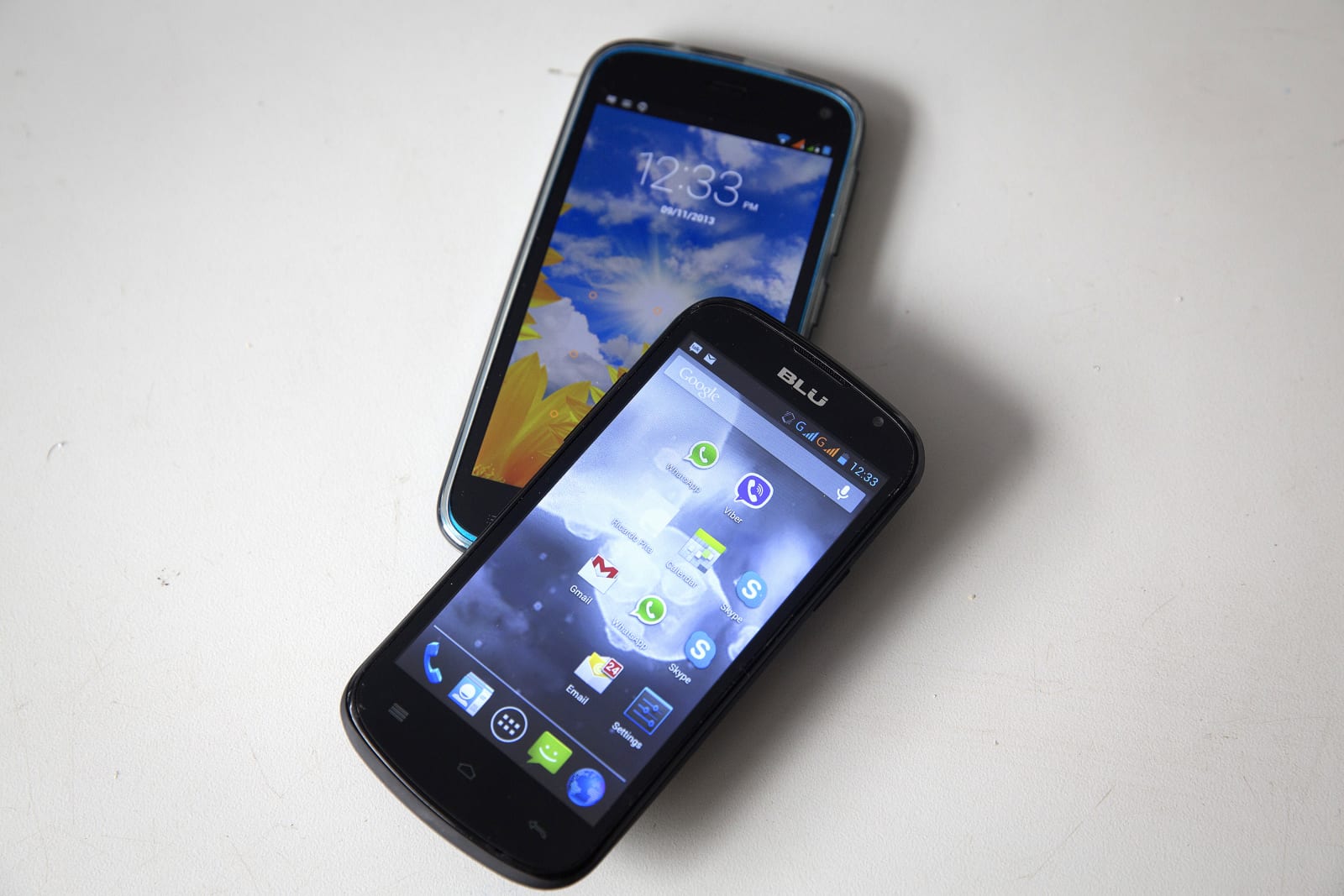 Unlocked mobile phone retailer Blu has settled with the FTC over allegations that it didn't protect consumers from a Chinese company that farmed their data and misled users about the extent of it. The device maker won't get slapped with a fine, but a...
Unlocked mobile phone retailer Blu has settled with the FTC over allegations that it didn't protect consumers from a Chinese company that farmed their data and misled users about the extent of it. The device maker won't get slapped with a fine, but a...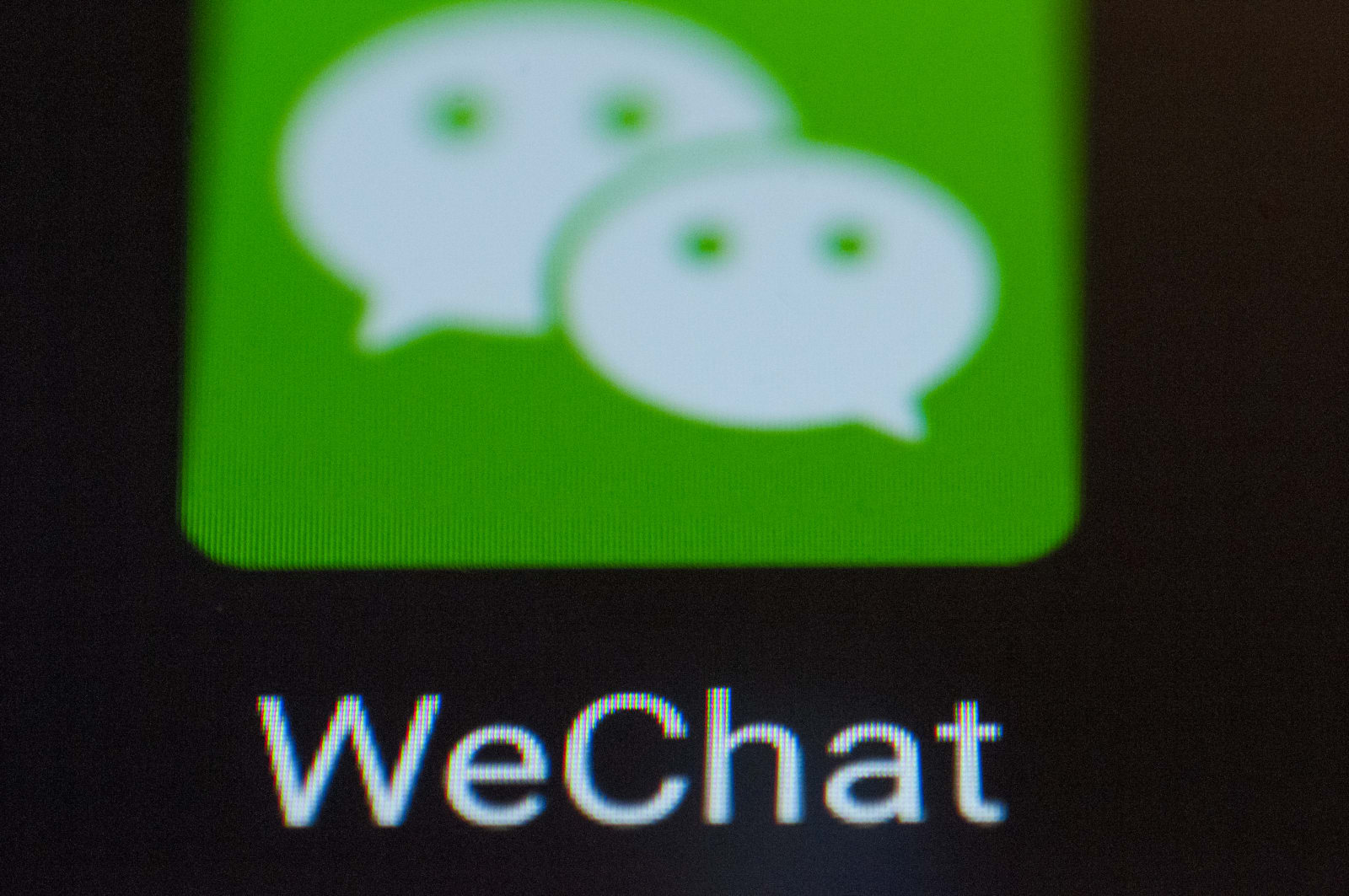 China is clearly fond of its far-reaching surveillance, but it's making some particularly boastful claims. An anti-corruption watchdog in Hefei claimed that a division in a nearby city managed to obtain a "series of deleted WeChat conversations" fro...
China is clearly fond of its far-reaching surveillance, but it's making some particularly boastful claims. An anti-corruption watchdog in Hefei claimed that a division in a nearby city managed to obtain a "series of deleted WeChat conversations" fro... WhatsApp's CEO Jan Koum posted on Facebook that he's leaving the company he helped found. But sources told The Washington Post that he's splitting after clashing with the messaging service's parent company, Facebook, over its desire to use WhatsApp's...
WhatsApp's CEO Jan Koum posted on Facebook that he's leaving the company he helped found. But sources told The Washington Post that he's splitting after clashing with the messaging service's parent company, Facebook, over its desire to use WhatsApp's... The Malaysian law criminalizing the spread of fake news was enacted less than three weeks ago and the country has already charged an individual for violating it. Danish citizen Salah Salem Saleh Sulaiman was arrested and charged with spreading false...
The Malaysian law criminalizing the spread of fake news was enacted less than three weeks ago and the country has already charged an individual for violating it. Danish citizen Salah Salem Saleh Sulaiman was arrested and charged with spreading false...If true, this will be 2018's largest IPO to-date.
Depending on where you live, Xiaomi is either huge in your country or hardly known at all. The 8-year-old company is currently the fifth largest smartphone brand in the world, and according to people familiar with the matter, is expected to go public with an Initial Public Offering (IPO) of 10 billion USD.
Assuming this turns out to be true, this would make Xiaomi's IPO the largest the world has seen so far in 2018. That may sound like exciting news for potential investors, but the way Xiaomi's going to handle itself as a public entity could present them with a difficult decision.
The majority of Xiaomi's earnings will come from software and services — not hardware.
As noted by Radio Free Mobile, Xiaomi will initiate a hardware margin limit of 5%. In other words, Xiaomi plans on earning little-to-no money on hardware and instead will rake in its cash through software and services. Xiaomi's often credited as being China's Apple, and while its hardware may take a lot of inspiration from the iPhone, MacBook, etc., this profit strategy is anything but.
Some of the services Xiaomi makes money through include advertising in its apps and paid subscriptions for digital book and video content. The company's work here shouldn't be discredited, but purposefully limiting itself to just 5% for hardware sales is an interesting move.
It's expected that Xiaomi will submit plans for the IPO by the end of this week and go public as early as June, but at this time, the company's yet to officially comment on any of this speculation. When that happens, we'll be sure to let you know.
The T-Mobile / Sprint merger could be great for consumers, but it probably won't be
 It's not just TV networks like Fox that are promising a host of live Twitter shows. Disney and Twitter have struck a deal that will bring a range of live shows to the social network. The pact will cover Disney's "entire" portfolio of entertainment,...
It's not just TV networks like Fox that are promising a host of live Twitter shows. Disney and Twitter have struck a deal that will bring a range of live shows to the social network. The pact will cover Disney's "entire" portfolio of entertainment,...Currently no word on pricing or availability.
Samsung's Galaxy A series is well-known for offering quality phones at affordable price tags, and today Samsung's Indonesia website gave us a look at new two phones coming soon to this lineup — the Galaxy A6 and A6+.
Looking at the two phones, their overall designs are pretty similar to one another. Both phones have 18.5:9 Infinity Displays, resulting in a narrow screen with slim bezels. The regular A6 has a 5.6-inch screen with a resolution of 1480 x 720 whereas the larger A6+ has a 6-inch one set at 2200 x 1080.
Both the A6 and A6+ have rear-mounted fingerprint sensors, face recognition, Bixby Home, Vision, and Reminder (no Bixby Voice, here), 32GB of internal storage, mysterious octa-core processors, and "breathtaking surround sound."
Look inside the two phones, however, and you'll find some notable spec differences. The A6 has a single 16MP rear camera, 16MP front camera, expandable memory up to 256GB, 3GB of RAM, and a 3,000 mAh battery. On the other hand, the A6+ has dual 16MP + 5MP rear cameras, 24MP front camera, expandable memory up to 400GB, 4GB of RAM, and a 3,500 mAh battery.
Samsung's yet to announce pricing or availability for the Galaxy A6 and A6+, but since the phones are living loud and proud on the company's official website, it shouldn't be too much longer before this info is made available.
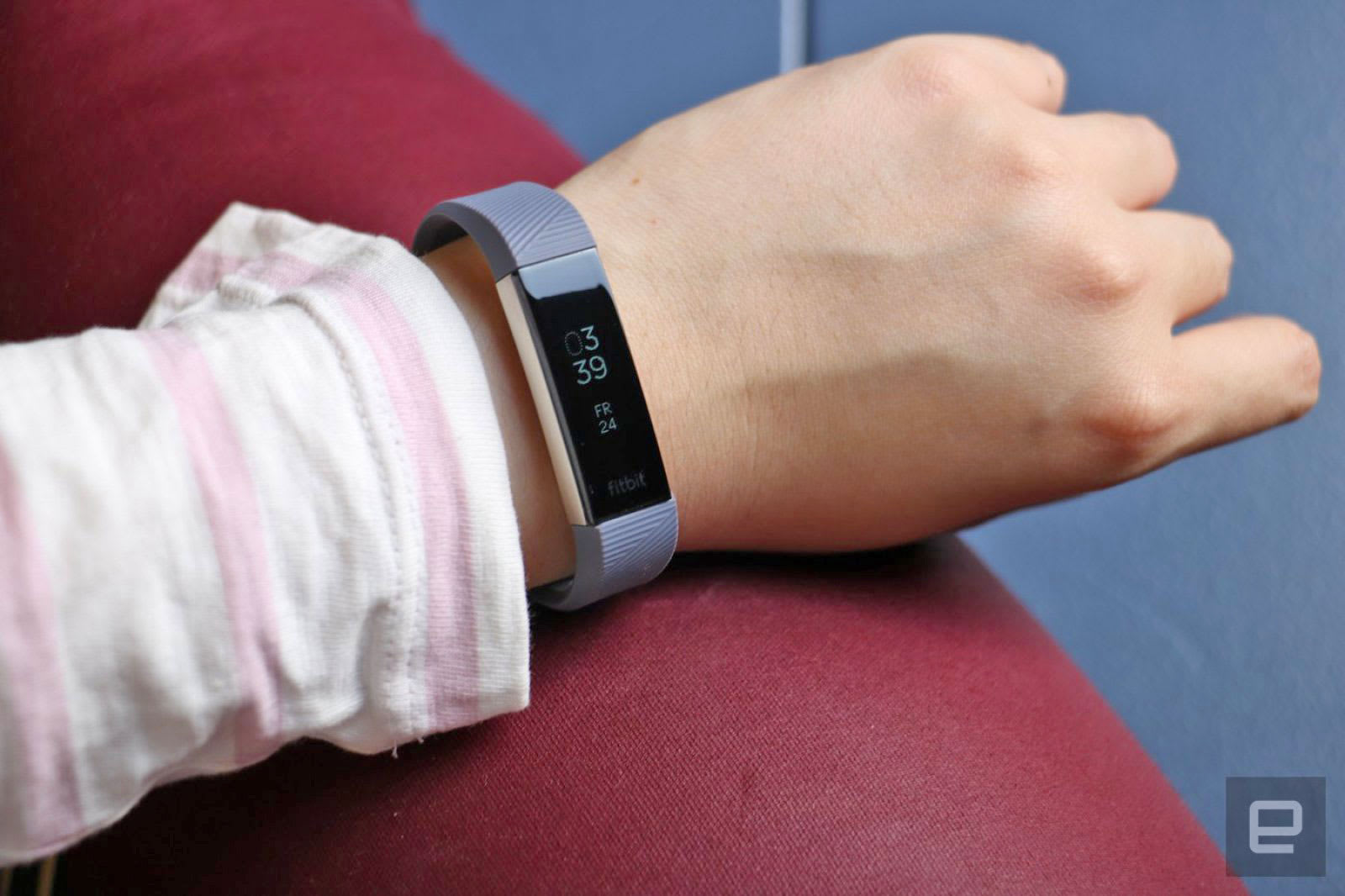 Fitness wearables are about to become even more valuable thanks to a partnership between Fitbit and Google's Cloud for Healthcare. According to a report at TechCrunch, Fitbit will be able to send health data to doctors, who will then be able to monit...
Fitness wearables are about to become even more valuable thanks to a partnership between Fitbit and Google's Cloud for Healthcare. According to a report at TechCrunch, Fitbit will be able to send health data to doctors, who will then be able to monit... Democrats in Congress have been against the FCC's repeal of net neutrality rules from the beginning. They've had the signatures in favor of restoring the rules since January, along with a companion House bill (with 80 co-sponsors). Senator Edward J....
Democrats in Congress have been against the FCC's repeal of net neutrality rules from the beginning. They've had the signatures in favor of restoring the rules since January, along with a companion House bill (with 80 co-sponsors). Senator Edward J....VR is expensive. Buying used might be the solution.
Google Daydream, Samsung Gear VR, and the PlayStation VR are taking the world by storm when it comes to amazing VR experiences. The only problem for some people is the price of getting started. For instance, the PlayStation VR is about $349 on Amazon for a bundle with Skyrim. But what if we don't have that kind of money?
No worries, we're here to walk you through all your buying used options!
You'll need to make sure you have a dedicated VR space, which is extremely important. Your entire gaming experience can be ruined if you find yourself trying to play in the smallest space possible because you keep running into walls or furniture!
For the PlayStation VR you'll obviously need to have a PlayStation 4 to run the device. A PlayStation Pro is recommended for the best PSVR experience, but you can still get a good quality of gameplay on the PlayStation Slim. Not just that, but the PlayStation Slim goes for about $299 which is $100 cheaper than the Pro.
Now with the Google Daydrea you will need to ensure that you have a device that is supported to run the headset.
Last but not least the Samsung Gear VR also requires supported devices you can check out here by clicking "Compatibility" on the menu bar.
Let's just get right to it: Buying a used VR headset thethe somewhat akin to buying a used pair of headphones. It's been tight against someone's face and they've likely sweat into it with perhaps an eye goober or two has slipped into the mix. Or their house is a lot like mine where there is a little gremlin who's super interested in everything they can't use. So, from jelly-fingers to other human eye-gunk you need to be okay with where your headset has been and know how to clean it off.
Is the used VR headset that you're considering in working condition? If at all possible, test it to make sure. This will be nigh-impossible if you're buying online, so you should ask for photos of the hardware working and more detailed photos of the hardware (ports and all) to make sure it's not damaged.
Also, be wary when you come across sellers who are marketing their equipment "as is." If there aren't enough photos to suggest that the hardware is not damaged and in good working condition, ask for more. If the seller refuses, no soup for you.
Better yet, most of us have smartphones now (all the cool kids, anyway), so ask the seller to send you a short video of the equipment in action.
Until VR really takes off, Craigslist just isn't going to be a valid source for used VR headsets. If you're purchasing your used VR headset online from sites like eBay or Swappa, make sure you're buying from trusted sellers and only those with great track records.
Here are the few places we've found used VR headsets and so far:
We all know GameStop is not one to cut prices down as cheap as buying it from a private seller, but you can get a console for a discount that can come with a warranty.
Have you found used VR headsets from any reputable sellers that we may have missed? Out the back of a hatchback in an alley doesn't count! Sound off in the comments below!
Updated April, 2018: We've updated links and information about buying used headsets as well as price updates!
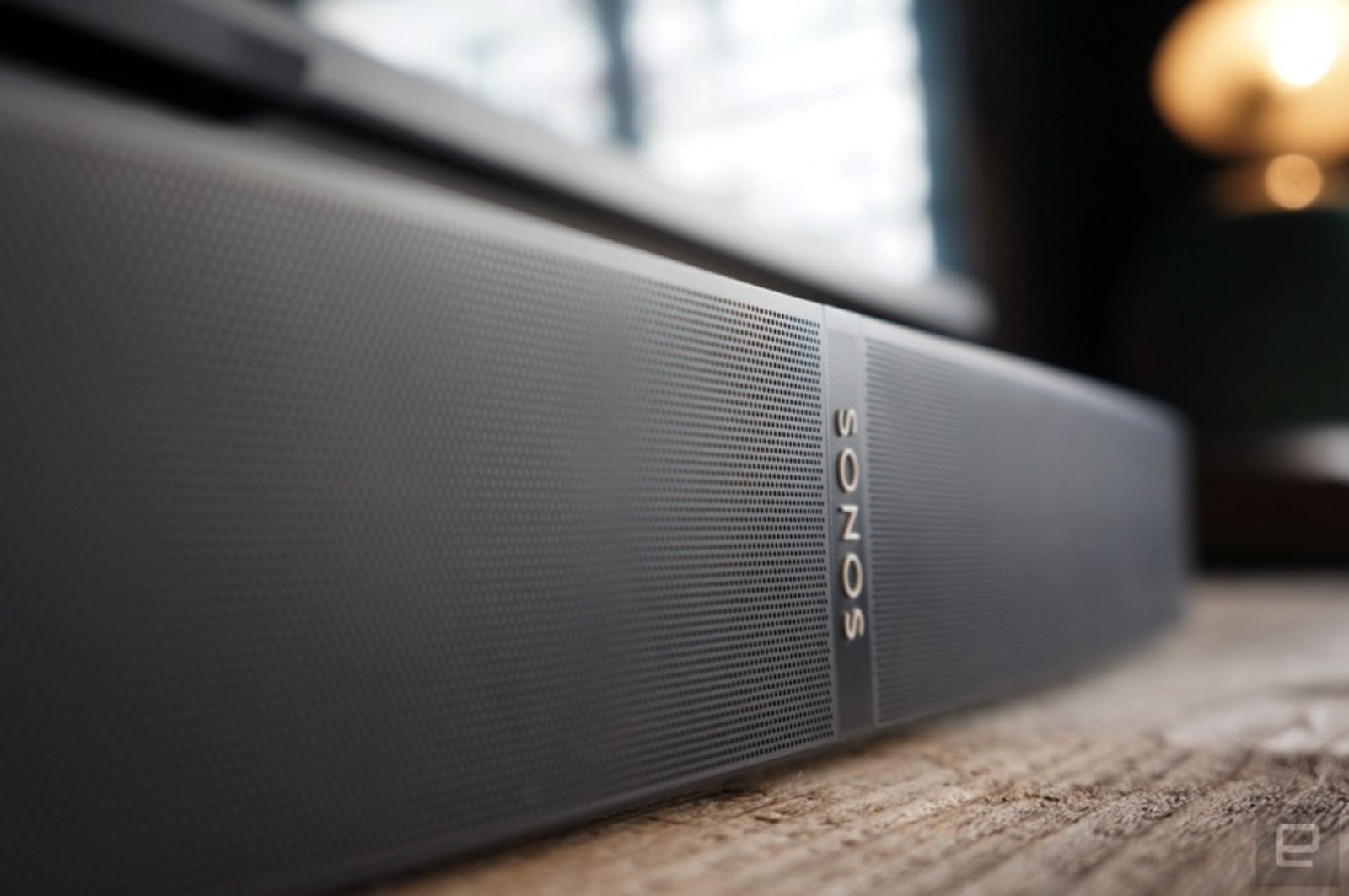 If you've been planning on upgrading your home theater, you might want to hold off a little longer. According to a new FCC filing, Sonos could be coming up with a new smart home theater speaker in the near future. Variety reports that the model numbe...
If you've been planning on upgrading your home theater, you might want to hold off a little longer. According to a new FCC filing, Sonos could be coming up with a new smart home theater speaker in the near future. Variety reports that the model numbe...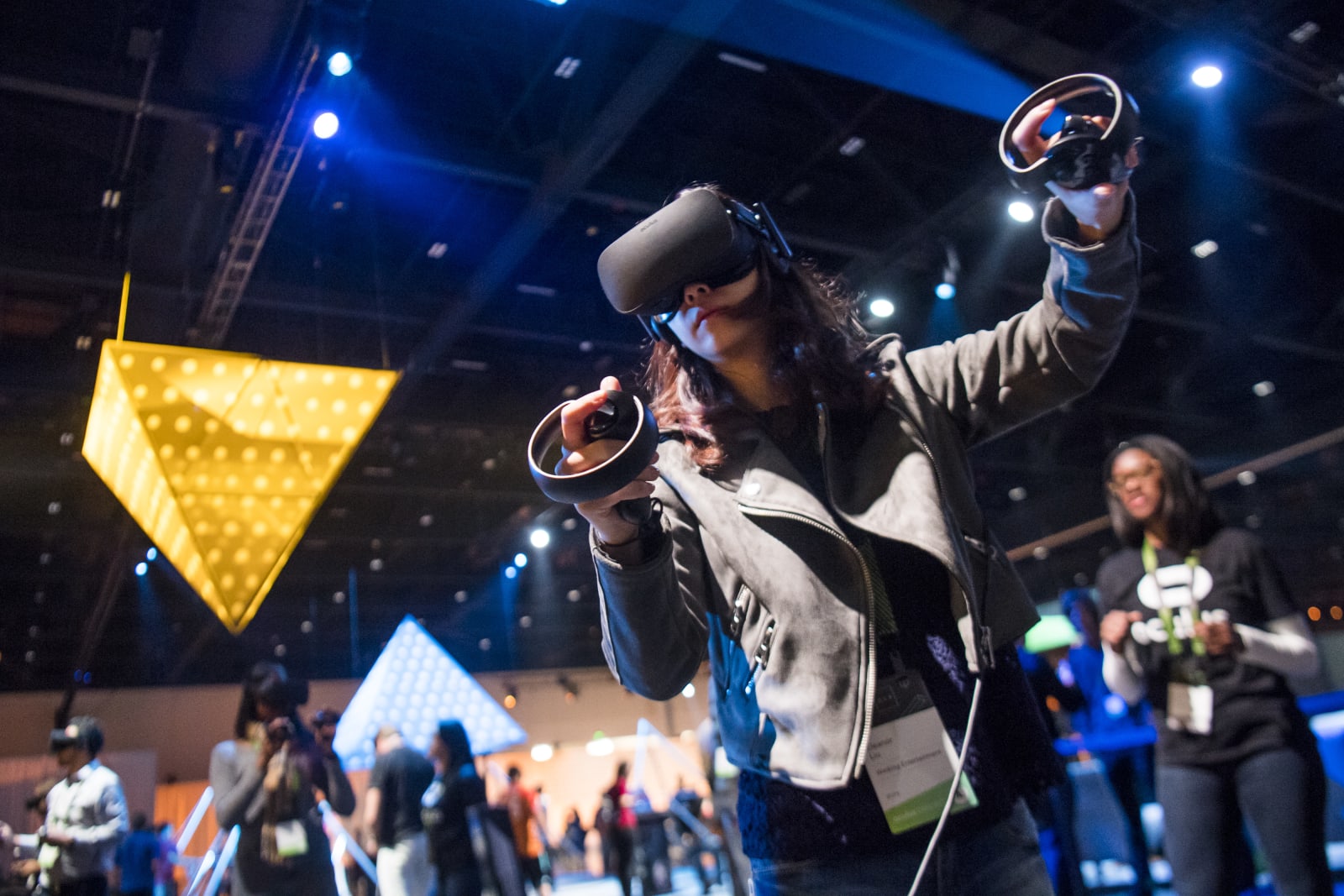 When you think about it, VR is ideal for the theatrical world: you'll always have the best seats in the house, and you can interact with the play without stepping on a stage. And now, Oculus wants to take advantage of that creative freedom. In an i...
When you think about it, VR is ideal for the theatrical world: you'll always have the best seats in the house, and you can interact with the play without stepping on a stage. And now, Oculus wants to take advantage of that creative freedom. In an i... Combatting hacking and cheating in online games has taken a serious turn for PlayerUknown's Battlegrounds developer Bluehole/PubgCorp. Over the weekend it was revealed that Chinese authorities arrested some 15 people for their roles in making and sel...
Combatting hacking and cheating in online games has taken a serious turn for PlayerUknown's Battlegrounds developer Bluehole/PubgCorp. Over the weekend it was revealed that Chinese authorities arrested some 15 people for their roles in making and sel...Both variants will be sold exclusively through Samsung.com.
The Samsung Galaxy S9 and S9+ are great smartphones, and with 64GB of internal storage and microSD support, offer plenty of space for all your local files. If you find yourself needing more room, however, Samsung's got you covered with newly announced 128GB and 256GB versions of both phones.
These versions of the S9 and S9+ have all the same specs and features we already know from the handsets, with the exception that the 64GB of storage has been upgraded to 128GB and 256GB. The processor, display, cameras, and everything else remains the same. Plus, even with the increased storage, you can still expand them up to 400GB with a microSD card.
Pricing for the new and old models is as follows:
Samsung's charging an extra $50 per each storage upgrade, and considering that you're doubling the amount of space with each bump up, that's not a bad deal at all.
The 128GB and 256GB S9 and S9+ will be available for pre-order beginning May 1 and will officially launch on May 18. For whatever reason, these versions will only be sold through Samsung.com and not at your local carrier store.
Additionally, anyone that pre-orders the new units or buys an existing S9/S9+ between May 1 and May 17 can get a free pair of Gear IconX (2018) wireless earbuds or purchase the Gear S3 Frontier for just $99 (normally $350)
 This week, Facebook will hold its ninth developer conference, and this time, the mood is a little... different. After all, the company has been embroiled in scandal after scandal over the past year, the most recent being the Cambridge Analytica contr...
This week, Facebook will hold its ninth developer conference, and this time, the mood is a little... different. After all, the company has been embroiled in scandal after scandal over the past year, the most recent being the Cambridge Analytica contr...Safely charge in the car.
Odds are you've heard of iOttie's awesome car mounts in the past, but did you know the company also sells some with wireless charging capabilities built in? They may sound expensive, but right now at Amazon they are on sale for 32% off, which drops the price down to just $33.95. There are two different options available, one which goes into a CD slot and one which clips into your vehicle's air vents. Obviously, if your vehicle doesn't have a CD player, you won't be able to pick this option, and the air vent one is pretty universal.
Of course, you'll need to have a compatible phone, like the iPhone X, Samsung Galaxy S9, or similar. The cigarette plug has a built-in USB port as well, so you can charge another device via a USB cable while wirelessly charging your main phone.
Both options were released back in February and have never dropped in price before this deal, so don't miss out.
Simply put, the Home Mini is the perfect smart speaker for just about everyone.
When Amazon launched the Echo Dot in 2015, it made a breakthrough in the smart speaker industry by offering all of the smarts of Alexa in a package that was considerably smaller and more affordable than its flagship Echo speaker. That's essentially the same path that Google took with the Home Mini, and while all of the things it does are done better by the regular Home and Home Max, it's become the smart speaker that I recommend to friends and family looking to venture into this field.
That's not to say the Home Mini is without its faults, but for anyone who's in the market to make their home a bit smarter, this is what I've come to love (and sometimes get annoyed by) with the Google Home Mini.
I could spend all day blabbering about the Google Assistant (the brains behind Home Mini), and while I'll touch on that in a bit, something that I think the Home Mini excels the most at is with its hardware. It's the same primary size and shape as the Echo Dot, but it looks ten times better.
The rubber bottom grips nicely to whatever surface you place it on, the plastic underside looks perfectly fine, and the fabric top helps the Home Mini blend seamlessly into the rest of your home's decor — available in gray, black, and coral shades.
Touch controls on the left and right work good for controlling your volume, stopping alarms, and ending voice calls, but the real star of the show here is sound quality.
I won't lead you into believing that the Home Mini sounds just as good as a Home Max, Echo Plus, or Sonos One. It just doesn't. However, for a speaker this small and compared to what Amazon achieved with the Echo Dot, I'm still amazed to this day just how good the thing sounds. The volume gets more than loud enough, vocals are crisp, and there's even a decent amount of bass.
A smart speaker is only as good as the assistant that powers it, however, but this is another area where the Home Mini continues to excel. In fact, it's continued to get better and better since its release. Google's constantly adding new features to the Assistant, and while finding and managing these can be a challenge at times, the sheer amount of things you can do without having to talk like a robot continues to be the Assistant's strong suit. Alexa may have more Skills at its disposal, but the Assistant's ability to pick up on context so you can talk in a natural manner is far more impressive.
My experience with the Home Mini has been mostly positive, but that's not to say it's a perfect product.
If you're like me and live with two Home speakers in a relatively small space, be prepared for some continuity annoyances. Multiple Google Home products work great together for streaming music to multiple speakers at once, but beyond that, there's a lot to be desired.
There's no reason why I shouldn't be able to ask Home Mini to create a to-do list.
When making dinner, I'll often ask the Google Home in my living room to set an alarm while waiting for some to cook. I'll ask how much time is left on my timer after a few minutes have passed, but the Home Mini in my bedroom thinks I'm talking to it and says "You don't have any timers set." There are also times when I'm in my bedroom at night, ask the Home Mini right next to me to set an alarm, and the one in the living room will decide that I was talking to it and set an alarm out there.
These annoyances aren't necessarily limited to the Home Mini, but rather a problem that Google has with its entire Home lineup. Setting an alarm or timer on one Home should do the same for the rest of the speakers connected to your Wi-Fi network, and I really hope this is something we see added in the near future.
Even with just one Home Mini, there are still little quirks here and there that can put a damper on the whole experience. Google's decision to restrict shopping lists to the Google Express app is an irritating move to push its online shopping service on all Home users, the Home app is a bloated mess that's in desperate need of simplification, and it's beyond me why I'm still unable to add things to a to-do list. Maybe this is something that'll change now that there's a proper Google Tasks app, but we'll see.
The Home Mini has a retail price of $49, but you can often find it being sold with a $10-$20 discount or being included for free with the purchase of a Pixel 2, Pixelbook, or something else. No matter how you get your hands on the thing, it needs to have a place in your home.
Life with a smart speaker is just easier. Whether you're setting timers, listening to background music, asking it to play a show on your Chromecast-enabled TV, control smart bulbs, or whatever else, a Home Mini is the perfect tool for making your life simpler. That may sound like a lofty claim to make for a $49 plastic and fabric donut, but it's true. As someone that uses the Home Mini every day, I can safely say that it offers the best combination of design, sound quality, smart features, and value that you can find in a product like this right now.
 When word got out that Twitter had sold data access to Aleksandr Kogan, the researcher at the heart of the Cambridge Analytica data sharing scandal, there was a looming question: did he pass that data to Cambridge Analytica? If you ask the company, t...
When word got out that Twitter had sold data access to Aleksandr Kogan, the researcher at the heart of the Cambridge Analytica data sharing scandal, there was a looming question: did he pass that data to Cambridge Analytica? If you ask the company, t...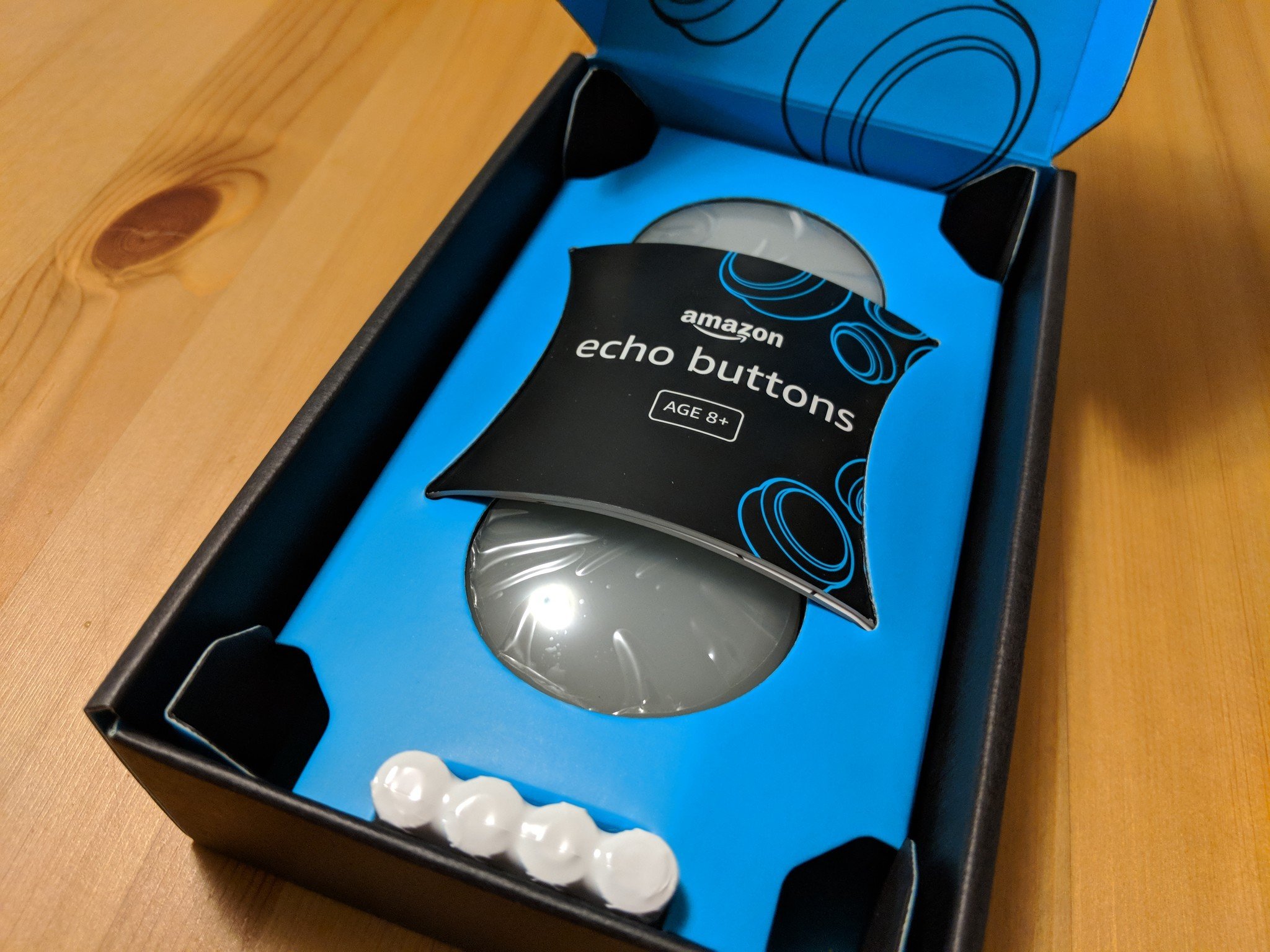 A pair of Amazon Echo Buttons. ($20 at Amazon)
A pair of Amazon Echo Buttons. ($20 at Amazon)
If you'll use 'em, sure.
I have a confession to make. I ordered the Amazon Echo Buttons when they were first announced. And I didn't take them out of the box for months. Months.
That's not usually the sort of thing you'd expect to read in a post asking if these things are worth it. I know. So let's flip things on their head yet again:
Yes, Amazon Echo Buttons are worth it. If you actually use them.
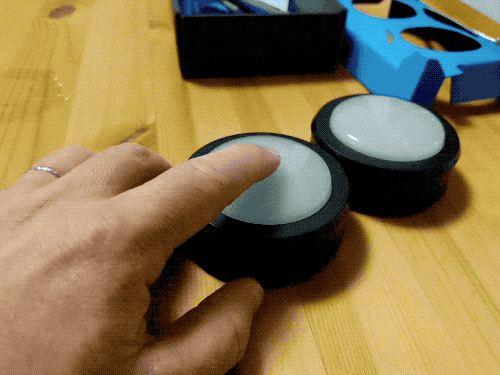 Ah! Good question. An Amazon Echo Button is a $20 pair of buttons that work with an Amazon Echo. Actually, these things maybe should have been called Amazon Echo Buzzers. Because they're basically like a battery-powered game-show buzzer that works with an Amazon Echo.
Ah! Good question. An Amazon Echo Button is a $20 pair of buttons that work with an Amazon Echo. Actually, these things maybe should have been called Amazon Echo Buzzers. Because they're basically like a battery-powered game-show buzzer that works with an Amazon Echo.
But it's probably a good thing they didn't called Amazon Echo Buzzer. That just sounds weird.
Anyway. You'll connect up to four of these things to the Amazon Echo, and fire up a game on the Echo that takes advantage of them. You versus ... someone. You hit the button to chime in. First button-presser gets to answer.
Oh, and they have fun colors that light up.
That's it.
Super easy.
There are a bunch of games (though not an infinite number) available.
Trivial Pursuit Tap is probably the biggest. Buzz in first and give the correct answer. Sounds Fun with Mike Epps is another.
You get see the full list of games that use the buttons here.
Yes, they're worth it! If you want to play this sort of game on an Amazon Echo. The buttons are a fun and relatively inexpensive (again, they're only $20) way to get more use out of an Amazon Echo or Echo Dot.
The trick is you just have to be sure to use them. Otherwise, they're the same as any piece of tech that you don't use.
A doorstop.